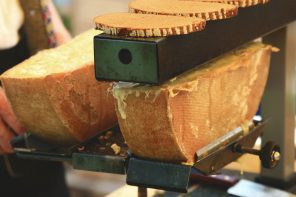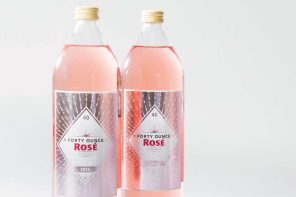From shades of pink lemonade to hues of rich red cherry, the rosé color spectrum is an Elle Woods dream come true. Although rosés of the pale pink variety are the most popular, those with more of a resemblance to cranberry juice are just as delicious and worthwhile. And with summer just around the corner, we’re preparing to drink all the shades rosé has to offer.
Provence
There’s a reason people think rosé from Provence is the “end all, be all” and it’s because they know how to produce amazing rosé (the region even has a rosé research institute!). No single varietal is used to make Provencal rosés, but instead, a perfect combination of Grenache, Cinsault, Syrah, and Mourvèdre are used to create these quaffable wines we can’t get enough of. Classic Provencal rosés are the palest pink, dry, delightfully crisp with notes of strawberries, raspberries, fresh-cut watermelon on the palate and floral aromas on the nose with a low alcohol content that makes them the perfect wine to drink for hours on end. These wines also have the ability to pair with almost any food.
Pinot Noir
Commonly produced via the vin gris process, Pinot Noir rosés are very similar to the rosés from Provence. Both have refreshing acidity, flavors of raspberry, strawberry, and watermelon that make both of these the perfect easy-drinking wine you want cases of to last you all summer. Although they might seem almost identical, Pinot Noir rosés have earthy notes (sometimes of wet stone) and are slightly darker than those of Provence.
Tempranillo
Beautifully pale pink in the glass, Tempranillo rosés present dry, savory, a little spicy, and can be easily identified by their signature taste of fresh green bell peppers. This Spanish grape makes a refreshing rosé with prominent berry notes like the ones you’d find in a Pinot Noir or Provencal rosé.
White Zinfandel
We can’t forget about White Zin! Although this particular pink wine has received more hate than coming to work after a three-day weekend, it’s still a rosé. White Zin was actually created by accident via the saigneé method in an attempt to make a more intense Zinfandel. Now known as the sticky sweet pink wine only drunk by people who know nothing about wine, it tastes like ripe strawberries with subtle notes of pineapple and sometimes banana.
Grenache
Grenache rosés are as rich in body as they are in color. They’re brilliantly ruby red with a lush full body that’s filled with flavors of orange, strawberry, candied grapefruit and a high acidity that’s ready to be served with food. Because Grenache grapes are slightly tinted, these rosés go through the vin gris process as they don’t have to spend as much time with the skins to develop their color.
Mourvèdre
You know how most people think rosé can’t be aged? Well, they’re right, for the most part. Say hello to the exception. Rosés made from Mourvèdre grapes, specifically from Provence’s Bandol region, are particularly age-worthy because they’re loaded with acidity, but this doesn’t mean they aren’t ready to drink now. They’re quite delicious now with aromas of fresh roses, red cherries, and plums on the palate that’re all packaged in a full-bodied rosé.
Sangiovese
Most commonly known for being the only grape allowed in the famous Brunello wines of Tuscany, and for being the most widely planted grape in Italy, Sangiovese makes a vibrant rosé. Its color skews slightly more red than pink and gives way to notes of freshly picked red berries and honeydew on the palate finishing with a delightfully crisp acidity.
Cabernet Sauvignon
The majority of Cabernet Sauvignon rosés are produced in the saigneé method, which makes these bottles bolder and more full-bodied than the mellow, pale pink wines you’re used to. This production method also gives these wines a deeper color making them more cherry red than pink with prominent flavors of citrus, cherry sauce, leather, and pepper. These wines hardly ever see oak barrels so be prepared for some jaw-tingling acidity.
Syrah
Hold onto your horses for this one, Syrah rosés are more unique than the rest of the easy-drinking, pale pink beauties out there. Usually more deep red in color, these rosés are made using the saigneé technique because of the grape’s dark skin, which produces a deeper, more full-bodied wine. But what makes this rosé varietal so unique is that it has bold notes of meat and fruit — it’s quite common to find spicy notes of white pepper and a subtle smokiness alongside red fruit like cherry and strawberry








